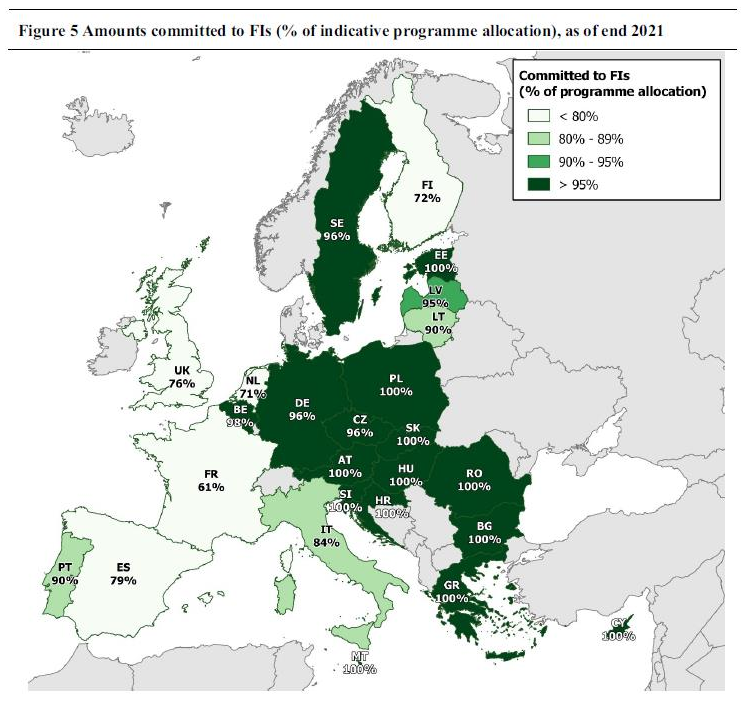The European Commission has published the Annual Summary Report on the implementation of financial instruments. The report shows that financial instruments have helped to leverage almost EUR 50 billion worth of financing for the benefit of the European Union.
- 05 December 2022

Attracting private investment for European Union objectives
Financial instruments are for example loans, equity and guarantees. They are a way to implement European Structural and Investment Funds, which go beyond the traditional practice of disbursing the funds to beneficiaries via grants or subsidies.
The advantages of these instruments is mainly that they allow to leverage public investment by making EU projects more attractive for private investors. This happens for example by decreasing the risks for private investors thanks to guarantees or other risk-sharing facilities.
By the end of 2021, EUR 12.9 billion of ERDF and CF paid to final recipients or set aside for guaranteed loans disbursed to final recipients mobilised EUR 48.3 billion of financing (loans, loans backed by guarantees supported from programme resources, and equity support or similar). This means that each euro of ERDF and CF paid to final recipients or set aside for guaranteed loans disbursed to final recipients mobilised 3.7 of financing on average.
In total, financial instruments under ESIF have mobilised almost 50 billion EUR worth of financing to the policy objectives of the European Union.
Background
Financial instruments can be provided by the EU through financial intermediaries in Member States under shared management to support their policies and programmes. Start-ups, micro companies, and larger businesses can all benefit from this type of funding. There are various types of financial instruments: equity and debt, loan guarantees, venture capital and risk sharing facilities. The EU has doubled the use of ESIF financial instruments in the programming period from 2014 to 2020 compared to 2007-2013.
The ‘Annual Summary Report on the implementation of financial instruments' presents data on the progress made in financing and implementing financial instruments supported by European Structural and Investment Funds in the 2014-2020 programming period (until 31 December 2021). It is based on data reported by the managing authorities in accordance with Article 46 of Common Provisions Regulation (EU) No 1303/2013 of the European Parliament and the Council (CPR), the Commission Implementing Regulation (EU) No 821/2014, and fund-specific regulations.
Fore more information have a look at the Annual Summary Report on the Implementation of Financial Instruments
